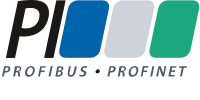Implementation
Implementing transmission interfaces:
Without power supply from the bus cable
For field devices which do not draw the required power from the bus, the standard copper-based RS485 interface can be implemented. This provides greater flexibility when using the field device, because it can be connected to PROFIBUS DP without a segment coupler or link. Data rates from 9.6 KBit/s to 12 MBit/s are supported. RS485 modules are available from various manufacturers including an intrinsically safe version RS485-IS.
With power supply from the bus cable
In many applications bus-powering of the field device is required. Here, the MBP (Manchester Coded Bus Powered) transmission technology is available which provides a typical supply current of 10 - 15 mA on the bus cable. This has to supply the entire device, including the bus connection and the measurement electronics. Special modem chips are available for these requirements. These modems draw the required operating energy from the MBP bus connection and make it available as supply voltage to the other electronic components of the device and convert the digital signals of the connected protocol chip to the bus signal of the MBP connection that is modulated to the energy supply.
Implementing the communication protocol
A broad spectrum of base technology components and development tools (PROFIBUS ASICs, PROFIBUS stacks, bus monitors, test tools and commissioning tools) and services are available for implementation of the PROFIBUS protocol. Additionally, PI competence Center and many suppliers offer support in this regard. An overview of this is found in the product catalog from PI. When implementing a PROFIBUS interface, it must be considered that the device behavior is determined by the PROFIBUS protocol and the implemented application. For this reason, the entire field device is tested during a certification test along with an eventual pretesting of the used base technology.
Interface modules
For small to medium quantities of devices, PROFIBUS interface modules are suitable which are available in a wide variety of versions on the market. They can be attached to the main PCB of the device as a supplementary module. They implement the full bus protocol and offer an easy-to-use user interface for each application.
Protocol chips
For larger quantities of devices, the use of protocol chips with or without additional microcontroller is the best solution with the following alternatives:
- Single chips, where all PROFIBUS protocol functions are integrated on the chip and which do not require a separate microcontroller (fig. 1, left). This is a hardware-only solution with a fixed functional scope. This solution using single chip ASICs is recommendable for basic IO devices. Only the components for the bus connection are required externally.
- Chips, which implement smaller or larger portions of the protocol, are combined with an additional microcontroller and firmware offered for the chip (fig. 1, center) to provide the full implementation of the PROFIBUS protocol. With this form of implementation, for instance, the essential layer-2 portions of the PROFIBUS protocol are implemented with a communication module.
- Protocol chips which already include a micro-controller in the communication module. In conjunction with firmware offered for the chip (fig. 1, right), the application communicates via an easy-to-use user interface. This soltion is used for highly time-critical applications, because the protocol chips with an integrated microcontroller already handles the entire PROFIBUS protocol autonomously and an externally-connected microcontroller can then be used entirely for the application.
Fig. 1:Different protocol chip solutions
Often the PROFIBUS chip and the supplemental protocol sofware (stack) come from different sources which increases the number of possible solutions and shows the the openness and multi-vendor capability of PROFIBUS. Pure software solutions can seldom be found on the market.
Implementing application profiles
The interpretation of data in a field device is handled by the user. User profiles represent the links between the PROFIBUS protocol and the actual application in a field device. The data formats, data access methods, parameterization and cyclical and acyclical communication diagnostics defined in the profile descriptions are implemented in software, which is often handled by the device manufacturers or technology suppliers.

